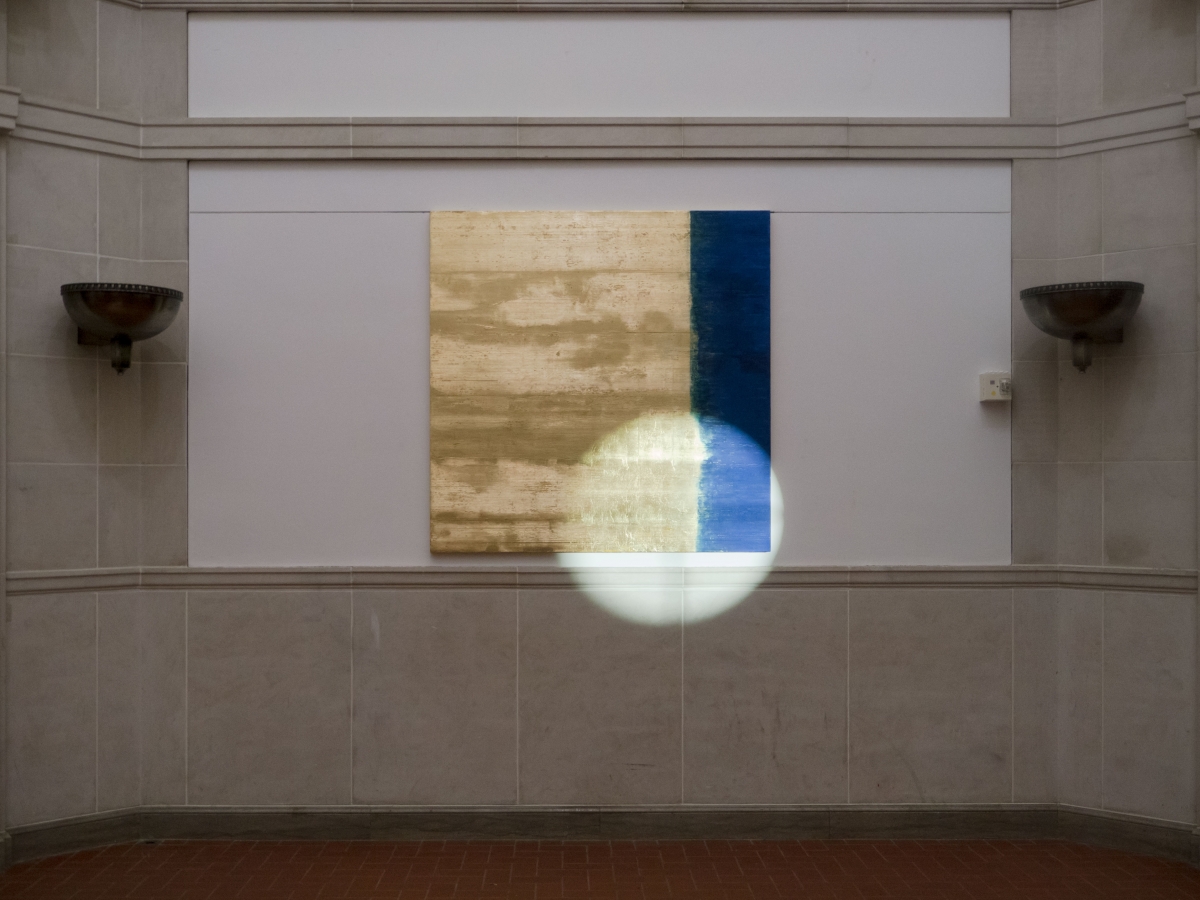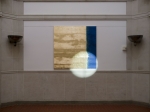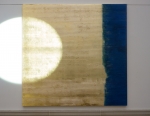Summer Solstice Shines in Pitt Faculty Multimedia Installation at Frick Fine Arts Building
High resolution image(s) available >
PITTSBURGH—Visitors to the University of Pittsburgh's Art Gallery this fall will experience the beauty and serenity of the summer solstice in Portal—a multimedia art installation that will highlight the annual Studio Arts Faculty Exhibition.
Portal is one part of the exhibition, “Reverberations,” which runs Sept. 10 to Oct. 23 in the gallery, located in the Frick Fine Arts Building, 650 Schenley Dr., Oakland. The show is free and open to the public. Visit http://www.studioarts.pitt.edu/content/reverberations for gallery hours and a schedule of Conversations with Artists.
Specifically created and designed for the building's rotunda, Portal traces the movement of the sun using theatrical lighting elements, paintings, and music as equal partners. Discs of light, mimicking the natural light from eight round windows circling the top of the rotunda, glide slowly across the walls and floor. At times, the ellipses of light land on one of four large gold and dark blue square-panel paintings arranged symmetrically opposite each other. This implies abstract representations of the summer and winter solstice and the spring and autumnal equinox. The lights move to a prerecorded soundtrack of hauntingly beautiful music and sounds representing the outdoors.
This combination of light, paintings, and music are the work of three Pitt faculty members— Assistant Professor of Studio Arts Aaron Henderson, whose videos and installations examine movement; Associate Professor of Studio Arts Michael Morrill, who has long been interested in abstract painting and multimedia collaborations; and Professor of Music Mathew Rosenblum, well known for his microtonal music. The Departments of Studio Arts and Music are within the Kenneth P. Dietrich School of Arts and Sciences at Pitt.
“It's a contemplative space,” said Henderson, who designed the digitally rendered light that co-exists with the rotunda's natural light. “It makes one think: ‘What day is sweeping past me?’”
Henderson used a 3-D computer model of the rotunda that reproduced the movement of the natural sunlight along its walls for each month of the year and throughout the day. This helped him program the theatrical lights to reproduce the natural light, representing one day in each month within one year.
“We wanted to create an aura that brings the outside in,” said Rosenblum. For example, Morrill's use of gold leaf and blue paint match hues in the Nicholas Lochoff paintings in the adjoining cloisters.
Some of Rosenblum's subtle sounds mimic birds chirping, water flowing in the Mary E. Schenley Memorial Fountain just outside the front door, or autumn leaves crunching underfoot. The sounds, some of which were created with a Japanese temple bowl, move around the room in relation to the light. When the day's light deepens, one may notice the sounds doing the same.
“This is an intersection of visual arts and music,” said Gallery Curator Isabelle Chartier. “It could also intersect with other disciplines—astronomy, architecture, or history. We hope to have performances and lectures in this space this year, some that coincide with this year's academic theme of the Year of the Humanities.”
###
8/31/15/klf/jf
Media Resources
Schools of the Health Sciences Media Relations
For more information about Pitt's schools of dental medicine, health and rehabilitation sciences, medicine, nursing, pharmacy, and public health, click here >
To locate stories from health science schools prior to 2013, visit the UPMC news archives »
Urgent Question?
University of Pittsburgh news reps are available to answer urgent media inquiries. Outside of regular business hours (Mon-Fri, 8:30 a.m.-5 p.m.), please email us at media@pitt.edu.
News reps for University of Pittsburgh Health Sciences schools can be reached outside of regular business hours through the paging operator at 1+412-647-2345.




